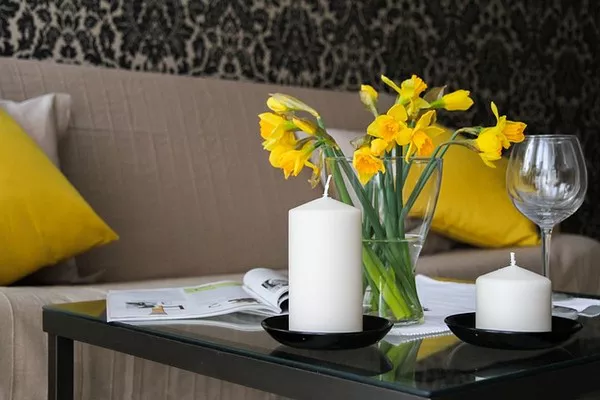When envisioning a picturesque garden, the image of vibrant blooms basking in the sunlight often comes to mind. However, not all plants require copious amounts of sun to flourish. In the world of horticulture, there exists a diverse array of shade-loving flowers that can transform even the shadiest corners into enchanting and colorful landscapes. These remarkable plants have adapted to thrive in low-light conditions, showcasing that beauty can thrive even in the absence of direct sunlight. In this article, we will delve into the fascinating world of shade-loving flowers and explore their characteristics, cultivation tips, and the aesthetic value they bring to our gardens.
See Also: 10 Beautiful Flowers That Thrive in Shade with Aromatic Blooms
Characteristics of Shade-Loving Flowers
Shade-loving flowers, also referred to as shade-tolerant or low-light plants, have evolved specific features that enable them to excel in environments with limited exposure to sunlight. Some common characteristics of these flowers include:
Large and Broad Leaves: Shade-loving flowers often have larger and broader leaves compared to their sun-loving counterparts. This characteristic allows them to capture and utilize whatever minimal sunlight is available more efficiently.
Varied Blooming Periods: Many shade-loving flowers bloom earlier in the spring or later in the fall when sunlight levels are generally lower. This strategic timing ensures that they can take advantage of the available light without direct competition from sun-loving plants.
Reduced Water Evaporation: Shade-loving plants are typically more adept at conserving water due to their reduced exposure to sunlight. Their leaves often have a waxier texture, which helps to prevent excessive water loss through evaporation.
Adapted Pigment Production: To maximize their use of available light, these flowers often produce pigments that aid in photosynthesis under lower light conditions. This adaptive strategy ensures their survival and continued growth.
Aesthetic Value of Shade-Loving Flowers
Shade-loving flowers bring a unique and ethereal charm to gardens and landscapes. Their lush foliage and delicate blooms create serene and peaceful atmospheres, ideal for contemplative spaces and quiet corners. In shaded areas where traditional sun-loving plants might struggle, these flowers thrive, adding bursts of color, texture, and form to otherwise overlooked spaces.
Texture and Contrast: Shade-loving flowers often possess a range of leaf textures, from glossy and smooth to velvety and corrugated. This diversity in texture can create captivating contrasts when paired with other shade-loving plants or used as focal points in garden designs.
Subtle Beauty: The subdued light of shaded areas can intensify the subtle beauty of shade-loving flowers. Their colors appear more saturated and nuanced, inviting observers to take a closer look and appreciate the delicate intricacies of their petals.
Calming Atmosphere: Gardens featuring shade-loving flowers can offer a sense of tranquility and relaxation. These spaces provide respite from the harsh glare of the sun and create an inviting ambiance for contemplation and relaxation.
Top Shade-Loving Flowers
Astilbe (Astilbe spp.): These feathery flowers are known for their vibrant colors and showy plumes. Astilbes thrive in partial to full shade, and their height makes them ideal for adding vertical interest to shaded beds.
Bleeding Heart (Dicentra spp.): Bleeding hearts are beloved for their unique heart-shaped blooms that dangle gracefully from arching stems. They excel in partial to full shade and can add a touch of whimsy to shaded garden spaces.
Hosta (Hosta spp.): Renowned for their diverse foliage patterns and colors, hostas are shade-loving perennials that thrive in moist, well-drained soil. They are excellent for creating lush ground covers or focal points.
Lily of the Valley (Convallaria majalis): This fragrant and dainty flower is a shade-loving classic. Its sweet scent and bell-shaped blooms make it a favorite for shaded borders and woodland gardens.
Fuchsia (Fuchsia spp.): Fuchsias are well-known for their pendulous, tubular flowers that come in a range of vibrant colors. They prefer partial shade and can be grown as hanging plants or in containers.
Cultivation Tips for Shade-Loving Flowers
Choose the Right Location: Assess the level of shade in your garden. Different shade-loving flowers have varying shade tolerance levels, so placing them in appropriate spots is crucial for their growth and blooming.
Soil Preparation: Improve soil drainage and fertility by incorporating organic matter such as compost. This helps create the ideal growing conditions for shade-loving plants.
Mulching: Apply a layer of organic mulch to retain soil moisture, suppress weeds, and regulate soil temperature. Mulching is especially important for shade-loving plants, as they often rely on the consistent moisture provided by the mulch layer.
Watering: Even though shade-loving flowers are adapted to lower light levels, they still require consistent moisture. Water deeply and regularly, especially during dry periods, to ensure their health and vitality.
Pruning and Deadheading: Regularly remove faded blooms and spent foliage to encourage continuous blooming and maintain the plants’ overall appearance.
Conclusion
Shade-loving flowers are a testament to the resilience and adaptability of nature. Their ability to thrive without copious amounts of sunlight showcases the intricate balance and beauty that exist within ecosystems. From their unique characteristics to their aesthetic value, shade-loving flowers offer a delightful alternative to the traditional notion of sun-drenched gardens. By incorporating these enchanting blooms into our landscapes, we can create captivating and serene outdoor spaces that captivate the senses and inspire a deeper appreciation for the wonders of the natural world.


